The Time the U.S. Navy Unloaded on the Iranians in the Most Explosive Surface Battle Since WWII
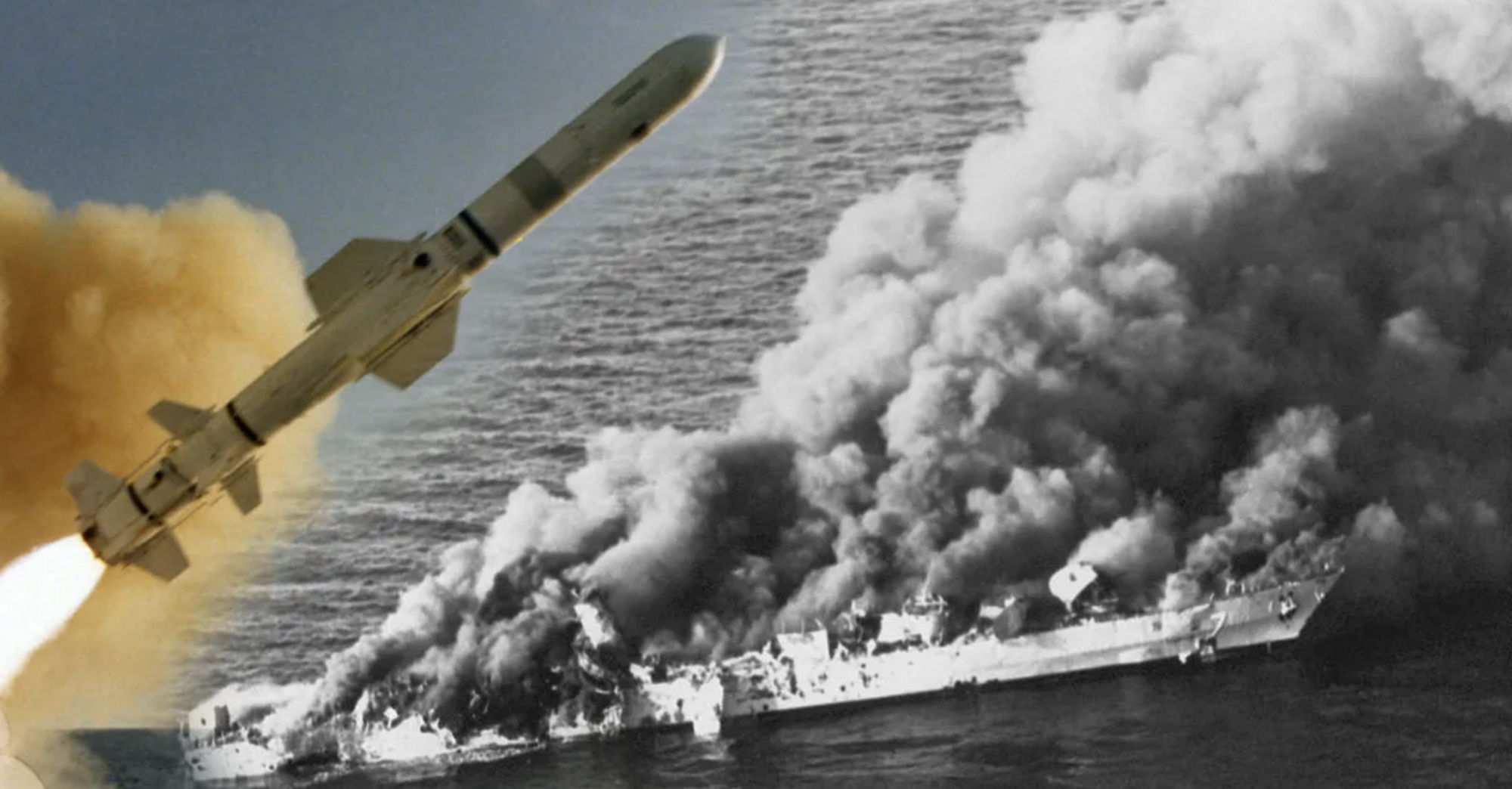
This article was originally published Sept. 1, 2020, on We Are the Mighty.
By Blake Stilwell
No love affair ever ended with more animosity than that of Iran and the United States. To this day, the two countries are constantly antagonizing each other.
Since the 1979 Iranian Revolution that led to the holding of 52 American hostages for 444 days, nearly a dozen incidents painted the relationship between the two countries. None was more violent than Operation Praying Mantis, the U.S. response to the USS Samuel B. Roberts striking an Iranian mine.
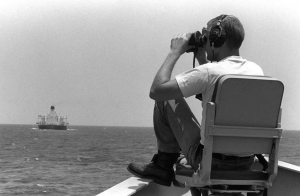
The Samuel B. Roberts deployed to the Persian Gulf as part of Operation Earnest Will, ordered by President Reagan to protect freedom of movement and international shipping in the Persian Gulf and Strait of Hormuz.
When the ship hit the mine, it became the catalyst for one of the largest American surface confrontations since WWII. At 105 km east of Bahrain, it was close to Iran’s maritime boundary but still well outside. The mine blew a 15-foot hole in the ship’s hull, injuring ten sailors. Luckily, the crew saved the Samuel B. Roberts, and it was towed to Dubai two days later.
For four years leading up to this event, Iraqi dictator Saddam Hussein planned to bring the U.S. into the ongoing Iran-Iraq War – on his side. In 1984, Iraq started attacking Iranian oil tankers and platforms to provoke the Iranians into taking extreme measures to protect its interests.
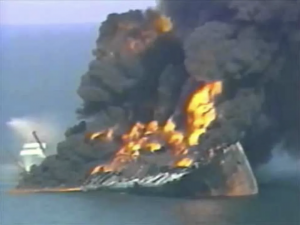
The Iranians responded as Hussein hoped, attacking Kuwaiti-flagged oil tankers moving Iraqi oil. Kuwait, though officially Iraq’s ally, was also a non-combatant and a key U.S. ally in the region. The Iranians were also illegally mining the Gulf’s international shipping lanes. Laying mines was an extreme measure Hussein hoped the Iranians would take and a move the United States didn’t take lightly.
In April 1988, Iran was caught mining international waters when U.S. Army Night Stalker MH-6 and AH-6 helicopters forced the crew of the minelayer Iran Ajr by to abandon ship. Navy SEALs then captured the Iran Ajr, finding mines and a log book on the ship’s mine placements. The Navy scuttled the ship the next day.
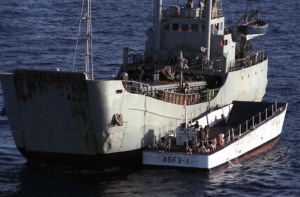
That’s when the Samuel B. Roberts hit a mine. The U.S. response was overwhelming. Aircraft from the USS Enterprise, along with two Surface Action Groups (SAG), moved on the Iranians on April 18, 1988.
The first SAG attacked the Sassan oil platform with two destroyers, an amphibious transport, and multiple helicopter detachments. Cobra helicopters cleared all resistance. Marines captured the platform and destroyed it as they left.
The other SAG, consisting of a guided missile cruiser and two frigates attacked the Sirri oil platform. The plan called for SEALs to capture the platform, but the pre-attack naval bombardment was so intense the SEAL mission wasn’t necessary.
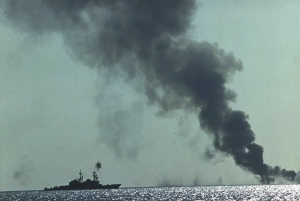
Iran responded by sending speedboats to attack shipping in the region. American A-6E Intruders sank one and chased the rest back into Iranian territory.
One Iranian fast attack ship, Joshan, challenged the entire second SAG by itself. It got one harpoon missile off before the other ships, the USS Wainwright, the USS Bagley and the USS Simpson hit it with four Standard missiles, then finishing it off with their guns. Chaff countermeasures diverted the Iranian harpoon missile. It did no damage.
An Iranian frigate, Sahand, attacked the USS Joseph Strauss and its A-6E overwatch, who all returned fire with missiles of their own. The American missiles started a fire aboard the Sahand, which reached her munitions magazine. The frigate exploded and sank.
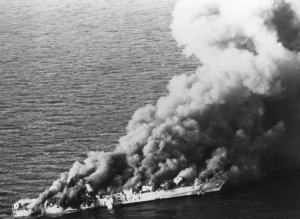
Another frigate, the Sabalan, moved to attack A-6Es from the Enterprise. One naval aviator dropped a Mark 82 laser-guided bomb on the Sabalan’s deck, crippling her and leaving her burning. As the Sabalan was towed away, the A-6Es were ordered to cut off the attack in an effort to keep the situation from escalating. The U.S. cut off all attacks in the region and offered Iran a way out of the situation, which it promptly took.
The U.S. retaliation operation, called Praying Mantis, cost the lives of three service members, Marines whose AH-1T Sea Cobra helicopter gunship crashed in the dark during a recon mission.

We Are The Mighty is a veteran-led digital publisher and Emmy-award-winning media agency servicing brands with video production, marketing, advertising, and consulting services to engage with the military community. In addition to our digital publisher, we also run the Military Influencer Conference, the largest in-person event servicing our military community. WATM is owned by Recurrent Ventures and is a GSA approved vendor.
BRCC and Bad Moon Print Press team up for an exclusive, limited-edition T-shirt design!
BRCC partners with Team Room Design for an exclusive T-shirt release!
Thirty Seconds Out has partnered with BRCC for an exclusive shirt design invoking the God of Winter.
Lucas O'Hara of Grizzly Forge has teamed up with BRCC for a badass, exclusive Shirt Club T-shirt design featuring his most popular knife and tiomahawk.
Coffee or Die sits down with one of the graphic designers behind Black Rifle Coffee's signature look and vibe.
Biden will award the Medal of Honor to a Vietnam War Army helicopter pilot who risked his life to save a reconnaissance team from almost certain death.
Ever wonder how much Jack Mandaville would f*ck sh*t up if he went back in time? The American Revolution didn't even see him coming.
A nearly 200-year-old West Point time capsule that at first appeared to yield little more than dust contains hidden treasure, the US Military Academy said.












